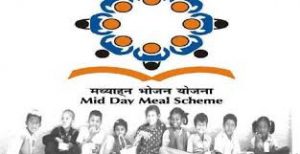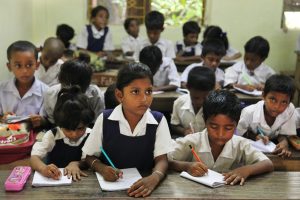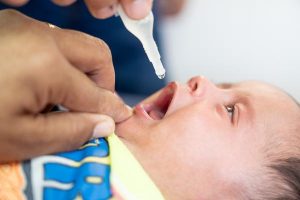Daily Current Affairs for Government Exams:
Today Current Affairs: 9th September 2020 for UPSC IAS exams, State PSC exams, SSC CGL, State SSC, RRB, Railways, Banking Exam & IBPS, etc
Table of Contents
Contents:
- World Solar Technology Summit:
- Mid-day meal scheme:
- Literacy in India:
- Full immunization program:
- Other important current affairs
1.World Solar Technology Summit:

The first-ever World Solar Technology Summit (WSTS) was organized by the International Solar Alliance (ISA) and the Federation of Indian Chambers of Commerce and Industry (FICCI).
- Objectives:
- To showcase to member countries the state of the art and next-generation solar technologies worldwide.
- To give an opportunity to decision-makers and stakeholders to meet, and discuss their own priorities and strategic agenda towards a larger integration.
- To discuss the recent highlights of solar technologies, cost-wise, technology-wise, technology transfers, challenges, and concerns in the field.
Steps Taken by India:
- India has enhanced its installed renewable capacity by 2.5 times and increased the solar installed capacity by more than 13 times.
- Globally, India ranks 4th in terms of renewable power.
- India has scaled non-fossil fuel-based power generations to 134GW, which is about 35% of the total power generation and it is expected to increase it to 220 GW by 2022.
- India is providing capacity-building support to ISA member countries through its Indian Technical and Economic Cooperation (ITEC) Programme.
- Project Preparation Facility has been set up to develop bankable Solar Energy projects in ISA member countries with the help of the Export-Import (EXIM) Bank of India.
- In 2018, India announced about USD 1.4 billion worth of lines of credit (LOCs) for covering 27 solar projects across 15 countries.
- These projects are in various stages of implementation.
International Solar Alliance
- It is a treaty-based international intergovernmental organization that was jointly launched by India and France on 30th November 2015 during the 21st session of the United Nations Climate Change Conference of the Parties (COP-21) in Paris, France.
- It was conceived as a coalition of solar-resource-rich countries (which lie either completely or partly between the Tropic of Cancer and the Tropic of Capricorn) to address their special energy needs.
- Aim: To lower the cost of technology and finance and thereby facilitate deployment of over 1,000 GW of solar energy and mobilize more than USD 1,000 billion into solar power by 2030 in member countries.
- Solar energy is a key source of affordable and reliable energy, thus it could play a significant role in achieving the universal energy access goal (SDG 7).
- Headquarter: Gurugram in Haryana, India.
- As of June 2020, the ISA Framework Agreement has been signed by 86 countries, with 68 having also deposited instruments of ratification.
2.Mid-day meal scheme:

The Vice President, Shri M Venkaiah Naidu recently suggested that milk could be given either as part of breakfast or the mid-day meal in order to improve the nutritional levels of children.
Mid-Day meal scheme:
- The scheme guarantees one meal to all children in government and aided schools and madrasas supported under Samagra Shiksha.
- Students up to Class VIII are guaranteed one nutritional cooked meal at least 200 days in a year.
- The Scheme comes under the Ministry of HRD.
- It was launched in the year 1995 as the National Programme of Nutritional Support to Primary Education (NP – NSPE), a centrally sponsored scheme. In 2004, the scheme was relaunched as the Mid Day Meal Scheme.
- The MDM rules 2015, provided that:
- The place of serving meals to the children shall be school only.
- If the Mid-Day Meal is not provided in school on any school day due to the non-availability of food grains or any other reason, the State Government shall pay the food security allowance by the 15th of the succeeding month.
- The meal shall be prepared in accordance with the Mid Day Meal guidelines issued by the Central Government from time to time.
- Procuring AGMARK quality items for preparation of midday meals, tasting of meals by two or three adult members of the school management committee, including at least one teacher, before serving to children.
- The School Management Committee mandated under the Right to Free and Compulsory Education Act, 2009 shall also monitor implementation of the Mid-day meal Scheme.
- The State Steering-cum Monitoring Committee (SSMC) shall oversee the implementation of the scheme including the establishment of a mechanism for the maintenance of nutritional standards and quality of meals.
Nutritional norms:
- In terms of calorie intake, as per the MDM guidelines, the children in primary schools must be provided with at least 450 calories with 12 grams of protein through MDM while the children in upper primary schools should get 700 calories with 20 grams of protein, as per MHRD.
- The food intake per meal by the children of primary classes, as provided by MHRD is 100 grams of food grains, 20 grams of pulses, 50 grams of vegetables, and 5 grams of oils and fats. For the children of upper-primary schools, the mandated breakup is 150 grams of food grains, 30 grams of pulses, 75 grams of vegetables, and 7.5 grams of oils and fats.
3.Literacy in India:

With 96.2 % literacy, Kerala has once again emerged as the most literate state in the country, while Andhra Pradesh featured at the bottom with a rate of 66.4 %, showed a report based on National Statistical Office (NSO) survey.
- The report on ‘Household Social Consumption: Education in India as part of the 75th round of National Sample Survey – from July 2017 to June 2018’ provides for state-wise detail of literacy rate among the persons aged seven years and above.
- According to the study, after Kerala, Delhi has the best literacy rate at 88.7 %, followed by Uttarkhand’s 87.6 %, Himachal Pradesh’s 86.6 %, and Assam’s at 85.9 %.
- On the other hand, Rajasthan is the second-worst performer with a literacy rate of 69.7 %, followed by Bihar at 70.9 %, Telangana at 72.8 %, Uttar Pradesh at 73 %, and Madhya Pradesh at 73.7 %.
- The study has pegged the overall literacy rate in the country at about 77.7 %. In rural areas, the literacy rate is 73.5 % compared to 87.7 % in urban areas of the country.
- At the all-India level, the male literacy rate is higher at 84.7 % compared to 70.3 % among women.
- The male literacy rate is higher than the female literacy rate among all states.
- The report also revealed that nearly 4 % of rural households and 23 % of urban households possessed computers.
4.Full immunization program:

According to the ‘Health in India’ report recently published by the National Statistical Organisation (NSO), the full immunization program is not completed among 40% of the children.
- The report is based on the 75th round of the National Sample Survey (July 2017-June 2018) on household social consumption related to health.
Data Analysis:
- Across the country, only 59.2% of children under five years are fully immunized.
- About 97% of children across the country received at least one vaccination — mostly BCG or the first dose of OPV at birth.
- Only 67% of children are protected against measles. Only 58% got their polio booster dose, while 54% got their DPT booster dose.
States/UTs Specific Data:
- Best Performance: Manipur (75%), Andhra Pradesh (73.6%), and Mizoram (73.4%) recorded the highest rates of full immunization.
- Poor Performance: Nagaland (12%), followed by Puducherry (34%) and Tripura (39.6%).
- In Delhi, less than half of all children are fully immunized.
Issue:
- The Covid-19 pandemic has already impacted the childhood vaccination program.
- According to the advocacy group, Child Rights and You reports, only half of the Indian families with children under five years were able to access immunization services during the lockdown.
Full Immunisation
- It means that a child receives a cocktail of eight vaccine doses in the first year of life.
- This includes:
- BCG Vaccine: It is injected in a single dose shortly after birth, which protects against a childhood attack of tuberculosis.
- Measles Vaccine: Measles is a viral disease.
- Oral Polio Vaccine (OPV): It is given against poliovirus. Its first dose is given at birth, followed by two more doses at intervals of four weeks.
- DPT/Pentavalent Vaccine: It is injected in three doses, which is meant to protect a child from diphtheria, pertussis or whooping cough, tetanus, Hepatitis B, and meningitis and pneumonia caused by Haemophilus influenzae type B.
- Booster doses for OPV and DPT are also given between 16 and 24 months.
Other important current affairs:
1. Govind Swarup, the man who pioneered radio astronomy in India, died in Pune following a brief illness. He was 91.
- Regarded as the “Father of Indian Radio Astronomy”, Swarup was the founder-director of TIFR – National Centre for Radio Astrophysics (NCRA) in Pune.
- Swarup is credited with conceptualizing and leading the team that set up the Ooty Radio Telescope (ORT) and Giant Meter wave Radio Telescope (GMRT).
- The ORT, which was completed in 1970, makes it possible to track celestial objects for 10 hours continuously and is one of the most sensitive telescopes in the world.
- Since 2002, GMRT has facilitated some novel discoveries in the field of astronomy.
- Among the rewards that Swarup received during his lifetime is the Herschel Medal of the Royal Astronomical Society, Padma Shri, the URSI Dellinger Medal, and the Grote Reber Medal of Australia.
2.National Bamboo Mission:
- The restructured NBM was launched in 2018-19 for the holistic development of the complete value chain of the bamboo sector and is being implemented in a hub (industry) and spoke model.
- Objective:
- Connecting farmers to markets so as to enable farmer producers to get a ready market for the bamboo grown and to increase the supply of appropriate raw material to the domestic industry.
- It also endeavors to upgrade the skills of traditional bamboo craftsmen as per the requirement of contemporary markets with a tie-up with enterprises and premier institutes.
- The Sector Skill Councils established under the National Skill Development Agency (NSDA) will impart skills and recognition of prior learning to traditional artisans, encouraging the youth to carry forward their family traditions.
- NSDA is an autonomous body under the Ministry of Skill Development and Entrepreneurship that anchors the National Skill Qualifications Framework and allied quality assurance mechanisms for synergizing skill initiatives in the country.
- New Logo:
- It portrays a bamboo culm in the center of a circle composed of half an industrial wheel and half farmers, depicting the objectives of NBM appropriately.
- The green and yellow color of the logo symbolizes bamboo often termed as green gold.
4. The Uttarakhand Government has decided to develop ‘Sanskrit Grams’ across the state.
- The decision was taken after noting significant progress in a pilot program to teach Sanskrit to residents of two villages in Uttarakhand.
- Sanskrit Grams Programme:
- Aim: To teach people to use Sanskrit regularly.
- Several villages were selected according to the availability of Sanskrit schools so that teachers may visit the villages often and motivate residents to learn and use Sanskrit.
- Villages were selected at the meeting of the Uttarakhand Sanskrit Academy, chaired by the Uttarakhand Chief Minister.
- It has also been decided to rename the academy as Uttaranchal Sanskrit Sansthanam Haridwar, Uttarakhand.
- The academy was established in 2002.
5.NITI Aayog is in the last stage for the preparation of the Multidimensional Poverty Index (MPI) parameter dashboard and a State Reform Action Plan (SRAP).
- In this regard, the Niti Aayog will leverage the monitoring mechanism of the Global Multidimensional Poverty Index.
- NITI Aayog is the nodal agency for the MPI.
- Part of the “Global Indices to Drive Reforms and Growth (GIRG)” exercise:
- Global MPI is part of the Government of India’s decision to monitor the performance of the country in 29 select Global Indices.
- The objective of the “Global Indices to Drive Reforms and Growth (GIRG)” exercise is to fulfill the need to measure and monitor India’s performance on various important social and economic parameters.
- This will enable the utilization of these Indices as tools for self-improvement, bring about reforms in policies while improving last-mile implementation of government schemes.
6.The Delhi Development Authority (DDA) has decided to hold public consultations for the preparation of the Master Plan for Delhi 2041, a vision document for Delhi’s development over the next two decades.
- The DDA, in partnership with the National Institute of Urban Affairs (NIUA), is currently preparing the Master Plan for Delhi 2041.
- The existing Master Plan for Delhi, which lays down planning guidelines, policies, code of development, and space requirements for various socio-economic activities will come to end in 2021.
- Features of 2041 Master Plan:
- This Master Plan focuses on sustainability, inclusivity, and equity.
- It endeavors to be proactive and forward-looking in nature that accounts for current, emerging, and anticipated drivers of urban development.
7.In a nationwide investigation, Railway Protection Force (RPF) has disrupted the operation of illegal software called “Real Mango” – used for cornering confirmed Railway reservation.
- Real Mango software is an illegal software developed for booking Tatkal tickets.
- Real mango software bypasses captcha.: It synchronizes bank OTP with help of a mobile app and feeds it to the requisite form automatically.
- The software auto-fills the passenger details and payment details in the forms.
- The software logs in to the IRCTC website through multiple IRCTC Ids.
- Following these steps, multiple tickets can be booked. And it leads to swift online tickets booking by agents whereas common people may not get the tickets booked on their own. This creates the possibility of ticket hoarding and black marketing of tickets.
- The information supplied by RPF will help the Centre for Railway Information Systems (CRIS) to strengthen security features in the Passenger Reservation System (PRS).
8.A team of researchers and engineers along with a drone pilot from the Dutch-based Technical University of Delft (TU Delft) have successfully conducted the first real test flight of the scaled model of the ‘Flying V’ aircraft.
- Flying V is a futuristic and fuel-efficient long-distance aircraft that could one day carry passengers in its wings.
- The Flying-V design, which derives its name from its noticeable ‘V’ shape, integrates the passenger cabin, the cargo hold, and the fuel tanks in the wings.
- Computer calculations have predicted that the aircraft’s improved aerodynamic shape and reduced weight will reduce fuel consumption by 20% compared to today’s advanced aircraft.
- The Flying-V carries about the same number of passengers – 314 in the standard configuration – and the same amount of cargo, 160 m3.
- The original plan for the Flying-V aircraft design came from TU Berlin student Justus Benad.
- The ‘Flying V’ project was first presented at the 100th anniversary of the Dutch airlines KLM, which has also been a partner in the project since its beginning in 2019. Various business partners including Airbus (an aerospace company), are now involved in the project.
9.The first-ever International Day to Protect Education from Attack is being celebrated on September 9, 2020, under the theme “Protect Education, Save a Generation.”
- The day was established by a unanimous decision of the UN General Assembly, calling on UNESCO and UNICEF to raise awareness of the plight of millions of children living in countries affected by conflict.
- Over the past five years, there have been more than 11,000 reported attacks on education in over 36 countries, according to the Global Coalition to Protect Education from Attack (GCPEA). 22,000 students, teachers, and academics were killed, injured, arrested, or otherwise harmed in attacks between 2015-2019.
- UNESCO and UNICEF will facilitate the annual observance of the Day in close collaboration with partners within and outside the UN system.




